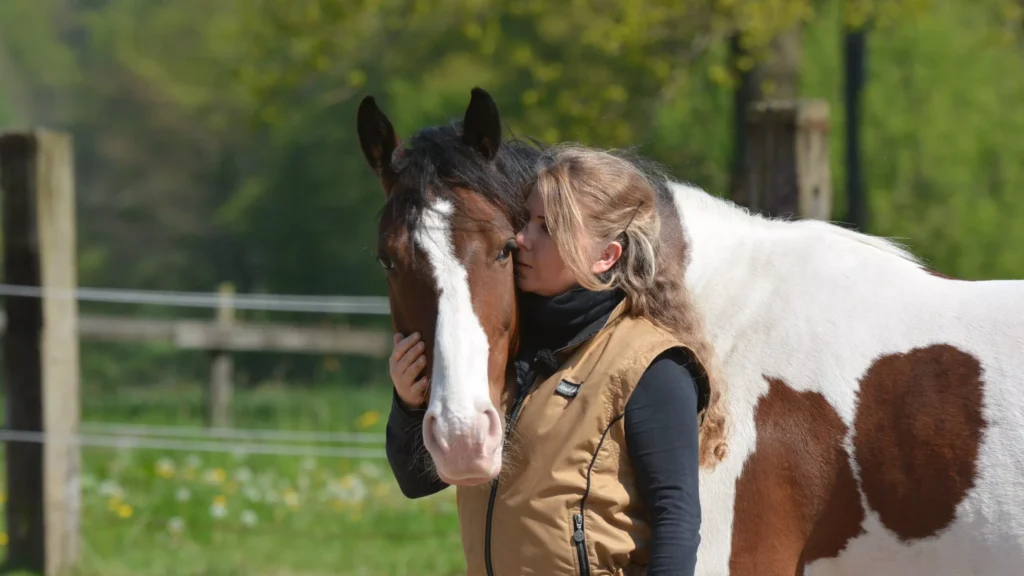Horsemanship is an age-old tradition that involves the care, training, and riding of horses.
However, in recent years, the term “ethical horsemanship” has gained attention as a new way to approach working with horses. This approach emphasizes the importance of mutual respect, trust, and understanding between humans and horses. Ethical horsemanship is not just about following rules or achieving specific results; it’s about creating a bond where both the horse and the rider can thrive.
What is Ethical Horsemanship?
At its core, ethical horsemanship is about treating horses with kindness and respect while using training methods that prioritize the well-being of the horse. Unlike traditional methods that may rely on force, dominance, or punishment, ethical horsemanship focuses on clear communication, gentle training techniques, and an overall positive relationship.
The key difference between ethical horsemanship and more traditional methods is that ethical horsemanship views horses as intelligent, sensitive beings rather than mere tools or machines. This perspective fosters an environment where both the horse and the rider work together to achieve goals, rather than forcing the horse to comply through fear or pain.
Principles of Ethical Horsemanship
- Respect for the Horse’s Nature
Ethical horsemanship begins with understanding the horse as an individual with its own personality, instincts, and needs. Horses are prey animals, meaning they are naturally inclined to be cautious and self-preserving. A key principle of ethical horsemanship is recognizing these instincts and working with them, rather than against them.
For example, instead of punishing a horse for being frightened or nervous, an ethical horseman would take the time to help the horse feel safe and secure. This might involve slow introductions to new experiences or environments, giving the horse time to adjust, and rewarding calm behavior.
- Positive Reinforcement Over Punishment
One of the cornerstones of ethical horsemanship is the use of positive reinforcement rather than punishment. Positive reinforcement encourages desired behaviors by rewarding the horse for doing something right, which builds trust and encourages the horse to repeat the behavior.
This could be as simple as giving a horse a treat, praise, or a scratch in a spot it enjoys when it performs a desired action. For example, if a horse successfully learns to move forward when asked, the trainer might reward it with a calm pat on the neck or a moment of rest.
Punishment, on the other hand, can create fear, confusion, and resistance. In traditional horsemanship, methods such as jerking on reins or using harsh bits were common, but ethical horsemanship seeks to avoid these methods, opting instead for more gentle, non-invasive techniques.
- Clear Communication
Effective communication is another vital element of ethical horsemanship. Horses cannot speak our language, so it’s up to the rider to use body language, vocal cues, and consistent signals to convey their intentions. Horses are highly attuned to nonverbal communication, and they will respond better when the rider is clear, calm, and consistent in their approach.
For example, a rider might use light pressure on the reins to signal the horse to slow down or stop, combined with a gentle shift of their body weight. Over time, the horse learns to associate these cues with the desired behavior, resulting in a clearer, more respectful partnership.
- Holistic Approach to Training
Ethical horsemanship also considers the horse’s overall well-being. This includes its physical, mental, and emotional health. A horse should not be pushed beyond its limits or forced to perform tricks or tasks it is not comfortable with. Ethical horsemanship takes into account the horse’s age, health, and temperament when planning training sessions and activities.
A horse that is overworked or stressed will be more likely to resist training and may develop behavioral problems. Therefore, ethical trainers aim to create a positive environment where the horse can learn at its own pace without feeling overwhelmed.
- Building Trust and Relationship
At the heart of ethical horsemanship is the desire to build a trusting, respectful relationship with the horse. Horses are intelligent creatures, capable of forming strong bonds with humans. When a horse trusts its handler, it is more likely to follow instructions and be open to learning.
Building trust takes time and patience. It involves spending time with the horse outside of training, understanding its body language, and responding to its needs. A horse that feels safe and understood will be more willing to cooperate, making the training process more effective and enjoyable for both parties.

Why Ethical Horsemanship Matters
The shift toward ethical horsemanship is crucial for the welfare of horses. In the past, many horses were subjected to harsh training techniques that prioritized results over the animal’s well-being. Ethical horsemanship challenges these outdated practices, offering a more compassionate, sustainable approach.
When horses are treated with respect and understanding, they are more likely to develop a positive attitude toward humans and training. This not only benefits the horse but also creates a safer, more enjoyable experience for the rider.
Additionally, ethical horsemanship promotes a more holistic understanding of animals in general. By treating horses as sentient beings with their own needs and preferences, we contribute to a more compassionate society where animals are valued for their intelligence and emotional capacity.
Ethical horsemanship is a philosophy that transforms the way we interact with horses. It emphasizes compassion, respect, and clear communication, encouraging a bond of trust and cooperation between horse and rider. By prioritizing the horse’s physical, mental, and emotional well-being, ethical horsemanship offers a humane alternative to traditional, often harmful practices. In the end, it’s not about dominance; it’s about partnership. A relationship where both horse and rider can thrive, grow, and succeed together.

